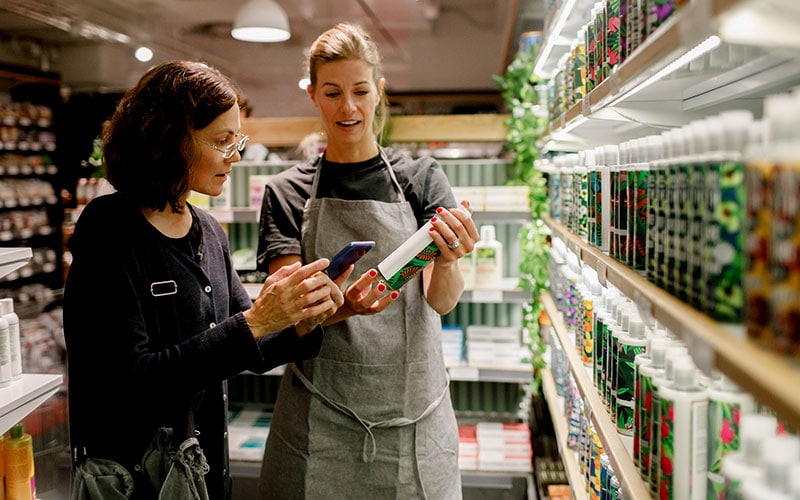In the wake of COVID-19, pharma companies have an immediate call to action to build resilience and address potential supply shocks. The priorities? Identify vulnerabilities in supply chain traceability, audit inventory and stocks, estimate market demand, confirm logistics and transportation capacity, plus stress test liquidity and financial impact.
Cost-effective, deployable solutions already exist to map the end-to-end supply chain, address supply chain challenges and enable resilience via rapid crisis response. Some of the world’s leading pharma companies have taken this step, using Kinaxis RapidResponse® to enable their supply chain planning process.
The critical nature of supply chain resilience
With the World Health Organization declaring COVID-19 a global pandemic, supply chain resilience is under greater scrutiny than ever.
The most effective way to manage supply chain risk? Proactively building a resilient supply chain before a crisis hits
Pharma companies have developed complex, global supply chains. While lean and efficient, they are nonetheless subject to events that may cause disruption. A reactive strategy to supply chain disruption spikes demands on resources, hinders a company’s ability to respond and ultimately may endanger patient safety.
Building a resilient supply chain before the crisis hits has emerged as a key strategy for pharma companies to manage supply chain risk and protect consumers.
COVID-19, disrupting the supply chain
In February 2020, the US Food & Drug Administration (FDA) announced that “the COVID-19 outbreak would likely impact the medical product supply chain, including potential disruptions to supply or shortages of critical medical products.”1
COVID-19 has led the FDA to identify 20 drugs manufactured in China that may be subject to supply chain disruption,2 including protease inhibitors, paracetamol3 and generics.4 As a result, the FDA requested more than 180 pharma companies to audit their supply chains and products manufactured in China, as well as their links with 63 Chinese manufacturers that produce essential medical devices.
Mitigating supply chain risk in a global pandemic
The FDA has proposed four measures to address supply chain risk caused by the COVID-19 pandemic:
- Lengthen expiration dates to mitigate critical human drug shortages.
- Strengthen critical infrastructure by requiring risk management plans.
- Improve critical infrastructure through improved data sharing and delivery of more accurate supply chain information.
- Establish reporting requirements for device manufacturers.
To mitigate disruption, pharma companies can take immediate actions to build supply chain resilience, as described in Figure 1.
Figure 1. COVID-19 Immediate actions for supply chain resilience
The criticality of supply chain planning
COVID-19 demonstrates that it may be impossible to know where and when the next disruptive event will occur - even if a pharma company already has a proactive supply chain strategy in place.
The unexpected surge in demand caused by COVID-19 has resulted in supply chain shortages.5 Preventing shortages of essential drugs and devices—whether antiviral drugs such as protease inhibitors or devices like N95 masks—is of global importance.6
Supply chain planning is critical to integrate supply and demand across the supply chain, including stakeholders such as regulators, suppliers and customers, plus business functions such as sourcing, procurement, logistics, transportation, finance and manufacturing.
Supply chain planning also predicts future product demand, determining which product needs to be manufactured at which location to meet demand. The planning process is also capable of answering whether the manufacturing facility has enough capacity to make the product, alternative locations for manufacture and how much additional time it would take for the finished product to reach the right location.
Understanding pharma supply chain structure
The pharma sector supply chain is typically broken into distribution and manufacturing stages (see Figure 2). Brand manufacturers produce finished goods in self-owned facilities, or via third-party manufacturers. Generics and raw materials are procured from preferred suppliers or vendors and transferred to manufacturing plants for final processing. Packaging is the final step in the manufacturing process prior to the distribution of finished goods.
Distribution is direct to providers or via a distributor, with providers ultimately selling or providing the drugs to the patients.
Figure 2. A typical pharmaceutical supply chain
Supply chain challenges and planning tools
Pharma supply chain disruption challenges include selecting alternate suppliers, manufacturing sites and determining logistics flow.
Selecting alternate suppliers, manufacturing sites and logistics flows remain key pharma supply chain disruption challenges
Also, it is difficult to determine exact delays in lead times for sourcing and transporting materials to the right manufacturing location. This leads to the further challenge of identifying alternate routes and modes of delivery to transport finished goods in a timely manner to the right location.
In supply chain disruption situations where demand impact is initially unknown, leading companies develop resilient supply chain planning processes and enable them with software and other technology that accelerates and amplifies their ability to adapt quickly to changing needs.
Mature processes and tools consider both reactive and proactive supply chain risk management, tailored to the unique needs of the pharma industry. One example is Kinaxis RapidResponse®7 for pharma supply chain planning. The business processes are described below. (See also Figures 3-6.)
Figure 3. Determining network visibility
The recommended business processes are described below,
1. Demand surges can be managed via network visibility:
a. Provide recommendations on alternate supply sources.
b. Use alternate bills of material.
c. Assess impact of lead times on fulfillment of increased demand.
2. Capacity planning:
a. Highlight delays to fulfill the increased demand.
b. Report assembly lines or facilities with overloaded resources to fulfill additional demand.
c. Identify alternate plant, locations, manufacturers or suppliers with additional capacity. The planning software can also infer the additional cost of required equipment and resources.
3. Inventory:
a. Planning tools that prioritize demand and guide inventory planning strategy. Inventory planning determines the impact of ‘stealing supplies’ from demand sources with lower priority. With COVID-19, for example, Chinese authorities were able to divert inventory to Wuhan from other locations.
Figure 4. Guidance on capacity planning
4. Modes of delivery:
a. Planning tools highlight alternative modes of delivery, and consider the impact of cost and lead times on the overall delivery. Planning tools also assess the need to airlift drugs and device to meet the elevated demands, even if it calls for increased transportation cost.
Figure 5. Planning analytics
5. Planning analytics:
a. Planning tools have in-built supply chain analytics that provide data-driven decisions at both operational and tactical levels. These span the entire supply chain of sourcing, manufacturing, distribution and analytics.
6. Performing simulations:
Another powerful supply chain planning tool is the ability to perform simulations with what-if scenarios. Planning applications provide comparative analytics for different scenarios a planner may perform.Examples include:
a. Select alternative sources to determine which one will fulfill demand with minimum cost increase.
b. Understand whether overloading capacity in plant 1, 2 or 3 is more effective and faster.
c. Calculate transport costs when selecting a more expensive carrier or air-lifting supplies.
d. Determine which alternative sources will fulfill new demand at the minimum marginal cost increase.
By performing what-if simulations, planners can compare lead times, delays and cost implications before finalizing the solution to meet increased demand.
Figure 6. What-if simulation scenarios
Proactive, reactive, integrated and resilient
A winning supply chain planning process is proactive, reactive, integrated and resilient. AI may be the shiny new object in supply chain planning, but people remain important to complement the intelligent software and robust processes discussed above.
From work across many clients, the following five areas have shown to be critical components of resilient pharma supply chains:
- Supplier networks;
- physical logistics networks;
- financial strength;
- product mix, flexibility and sustainability;
- organizational resilience to supply chain disruption, elastic demand and supply shocks.
Cost-effective, deployable solutions already exist to map the end-to-end supply chain, address supply chain challenges and enable resilience via rapid crisis response. Leading pharma companies have taken this step, often using Kinaxis RapidResponse® to enable their supply chain planning process.
COVID-19 has highlighted the need for companies to build a resilient supply chain, assessing internal and external vulnerabilities and sources of disruption
These solutions simulate the potential impact of disruptive events such as pandemics, estimate the effect on liquidity and profitability, and deliver faster response times during a crisis. That’s the type of support pharma companies can use, especially in times like these.
References
- FDA announces coronavirus-related drug shortage in US, Alexandria Hein, February 28, 2020, foxnews.com.
- Coronavirus (COVID-19) supply chain update, press release, Stephen M. Hahn, February 27, 2020, U.S. Food & Drug Administration.
- Paracetamol prices jump 40% in India as coronavirus shuts down China, Shruti Srivastava, February 17, 20220, Bloomberg and NDTV.com
- Generic drug makers may face supply shortages from China if coronavirus drags on, Reuters, February 14, 2020, NDTV.com
- With most drug ingredients coming from China, FDA says shortages have begun, David Lazarus, February 28, 2020, Los Angeles Times.
- Covid-19: Supply chain disruptions make Cos airlift parts, Kanad Kalasur, March 11, 2020, Team-BHP.com
- Why Kinaxis, Kinaxis.com.











